What is Cocaine?
History of Cocaine
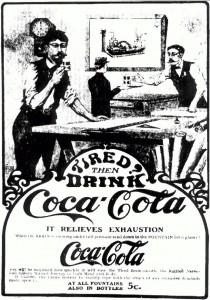 In 3,000 BC, natives of South America first started chewing on coca leaves as a stimulant. The effects of the leaves increase oxygen intake and breathing, which gave the native labourers more stamina to work in the thin air of high altitudes. Native Peruvians use to chew on coca leaves during religious ceremonies but that changed once Spanish soldiers invaded Peru in 1532. Forced Indian labourers who worked in Spanish silver mines were supplied coca leaves since it made it easier to exploit and control them.
In 3,000 BC, natives of South America first started chewing on coca leaves as a stimulant. The effects of the leaves increase oxygen intake and breathing, which gave the native labourers more stamina to work in the thin air of high altitudes. Native Peruvians use to chew on coca leaves during religious ceremonies but that changed once Spanish soldiers invaded Peru in 1532. Forced Indian labourers who worked in Spanish silver mines were supplied coca leaves since it made it easier to exploit and control them.
Science eventually found out how to maximise the effect and strength of the drug found in the coca leaves. Albert Niemann, a German chemist, first extracted cocaine from coca leaves in 1859 but it only began to be popularised in the medical community in the 1880s.
Sigmund Freud, the famous Austrian psychoanalyst, used cocaine and promoted it as a tonic to help with sexual impotence and depression. He published an article on the benefits of cocaine and even prescribed it to his girlfriend and close friends. Freud claimed, “For humans the toxic dose (of cocaine) is very high, and there seems to be no lethal dose.” One of his patients died from a high dosage that he prescribed.
Cocaine got another boost in popularity in 1885, when John Pemberton introduced coca leaves as an ingredient in a new soft drink called Coca-Cola. By the turn of the century, Coca-Cola’s popularity increased greatly due to its energising and euphoric effects.
Cocaine tonics, wines and elixirs were popular between the 1850s and early 1900s. Famous figures who endorsed the effects of cocaine included actress Sarah Bernhardt and inventor Thomas Edison.
The use of cocaine in society continued to increase and the dangers of the drug slowly became more evident. In 1903, Coca-Cola had to eliminate cocaine from its ingredients due to public pressure. Snorting cocaine had become popular by 1905, and by 1910 the medical community began to report cases of nasal damage caused by the use of the drug.
Cocaine was banned in the United States in 1922. It became a fashionable drug in the 1970s for businesspeople and entertainers. Columbian drug traffickers started to set up networks for smuggling cocaine in the late 1970s.
Smoking crack cocaine also started in the late 70’s. The method of smoking ‘rocks’ was originally used so that cocaine distributors could test the quality of the drug before purchasing it off the manufacturers.
While cocaine was considered a rich man’s habit, the late 1980s saw the beginning of easily accessible cocaine. Nowadays cocaine can be found across the globe. It is the second most trafficked illegal drug in the world.
How is Cocaine Used?
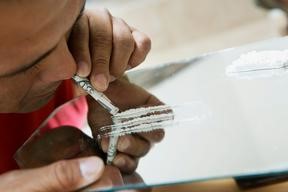
Cocaine is typically crushed into a fine powder on a hard surface and divided into small rows known as ‘lines’. The cocaine is then inhaled, or ‘snorted’, through the nose with rolled up money or a short straw and is absorbed through the nose’s mucous membrane.
Injecting cocaine into the blood stream is less common than snorting it.
When it comes to injecting, users combine the cocaine with water and inject the solution intravenously with a syringe. This allows the drug to rapidly absorb into their system, despite the increased risk of overdose.
Freebasing is a term used to describe smoking cocaine by converting cocaine hydrochloride into a ‘freebase’, or crack cocaine. Crack cocaine requires a mixture of cocaine hydrochloride, baking soda (sodium bicarbonate) or ammonia and other ingredients, which solidifies into pellets known as ‘rocks’. The crack cocaine is smoked through a glass pipe. Inhaling the vapour or smoke increases the absorption rate, with less health risks than injecting. The name ‘crack’ describes the crackling sound that occurs when the rock is heated.
Cocaine can also be rubbed onto the gums or ingested.
The way that cocaine is administered effects the duration and intensity of its pleasurable effects. Smoking or injecting cocaine quickly sends the drug into the brain and bloodstream, causing a stronger, yet shorter-lasting, high than snorting it. Smoking or injecting cocaine can cause effects for up to ten minutes, whilst snorting cocaine can last up to half an hour.
Ready to Get Help?
Contact us today to find out how you can help your loved one overcome their addiction.
Different Types of Cocaine
The three main types of cocaine are cocaine hydrochloride, freebase cocaine and crack cocaine.
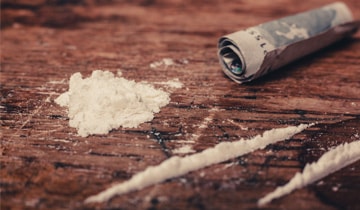
Cocaine hydrochloride
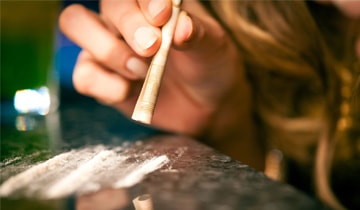
Freebase or alkaloidal cocaine
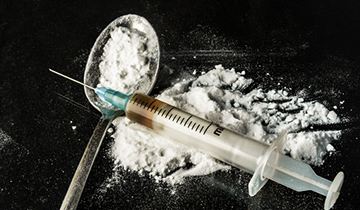
Crack cocaine
Street names for cocaine in Australia
- Coke
- C
- nose candy
- flake
- white
- snow dust
- white lady
- rock
- crack
- reebase
- toot
Street names for cocaine around the world
- Low
- snow
- base
- basa
- powder
- smack
- big rush
- pearl
- candy
- cola
- bump
- line
- rail
Street names for crack cocaine
- Snow coke
- rocks
- black rock
- chemical
- candy
- nuggets
- gravel
- grit
- hail
- hard rock
Combination of cocaine & other drugs
- Spaceball
- speedball
- blunt
- woo-woo
- snow seals
- woollies
- candy
- flipping
- flamethrowers
People who use cocaine tend to take the drug repeatedly, within a relatively short amount of time, in order to maintain their high. They often increase the doses as well. Though addiction develops prior to the actual drug taking (with genetics as the crucial account for 40-60% of a person’s likelihood to develop an addiction), the more a person uses the drug, the more they are at risk of developing a dependency.
Simply taking cocaine for ‘fun’ can easily lead to addiction. It is best to seek treatment as early as possible. Cocaine users will have to adopt the abstinence model of treatment, which means that, in order to prevent relapse, one must stop using the drug completely. If you or your loved ones need help with finding the right treatment centre for cocaine addiction, contact us today for a free consultation.
